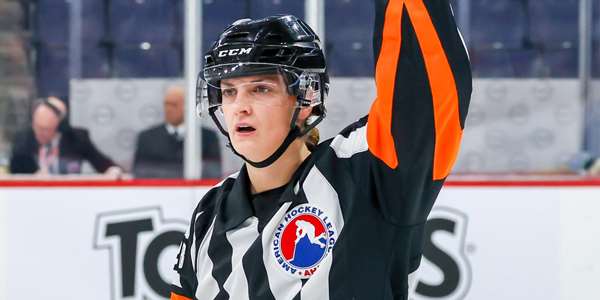
Schedule
Team Canada (Men)
IIHF World Junior Championship | Dec. 26, 2024-Jan. 5, 2025
Spengler Cup | Dec. 26-31, 2024
4 Nations Face-Off | Feb 12-20, 2025
IIHF U18 World Championship | April 23-May 3, 2025
IIHF World Championship | May 9-25, 2025
U17 World Challenge | Nov. 3-9, 2024
Hlinka Gretzky Cup | Aug. 5-10, 2024
Junior A World Challenge | Dec. 9-15, 2024
National Junior Team vs. USPORTS | Dec 12-13, 2024
Search

Future is Bright for Young Swedish Team

|
By Kristen Lipscombe The Canadian and American squads may have plenty of depth, experience and exposure on their sides, but the underdog women’s hockey teams are more than ready to play catch up. Teams such as Sweden and Finland are using their lack of experience in global hockey competition to their advantage. They may not have the seasoned veterans that compose the North American squads, but both teams have young, skilled and vibrant players with as much passion for the sport as any hockey champion. The players on Team Sweden, for instance, combine for an average age of 21 years old. Compare that to an average age of about 28 years old on Team Canada and it becomes clear that the Swedes are a skilled and youthful squad with a very promising future. Team Sweden has consistently placed in the top four during international tournaments. In the 2002 Salt Lake City Olympics, the team defeated rivals Team Finland for the bronze medal. Additionally, Sweden has managed a fourth place finish five separate times in World Women’s Hockey Championship action (including at this year’s tournament). Fifteen-year-old forward Pernilla Winberg is the team’s youngest player. She is also the second youngest player to participate in the 2004 World Women’s Hockey Championship. This is Winberg’s first time ever participating in the Championship – she is one of eight rookies to play for Team Sweden this year. Assistant Captain Gunilla Andersson, on the other hand, has played for Sweden’s national team since 1992. The 24-year-old veteran defender has played 165 national games since that time, and has been on Team Sweden longer than any of her teammates. “The whole game has been developed,” commented Andersson on the growth of women’s hockey in her country. “In Sweden the team has been younger and younger every year. More girls play.” She said that over time, the women’s hockey program in Sweden has become increasingly developed and skilled.. “I think everyone is more technical with the puck,” said Andersson. “We are “Now most of the girls start when they’re pretty young,” remarked Andersson. If Sweden is able to maintain the majority of its roster over the next ten years, this means that the team will have a mature and highly skilled team both at the 2006 Olympic Games in Turin and the 2010 Olympics in Vancouver. Andersson thinks if her team can improve their skating speed and overall physical game, Team Sweden may be able reach Canada’s caliber on the ice within two or three years. “Canada is the powerhouse of women’s hockey,” said Swedish head coach Peter Elander. “They have seven more years experience on each player.” He said his team’s experience can be both beneficial and detrimental. “When you’re that age you sometimes
look at your own experience (rather) than the “On the other hand, there is a lot of energy in the young kids and they forget the mistakes and feel they can be so good,” added Elander. Elander is satisfied with the performance of some of his younger players, such as Winberg and blueliner Jenni Asserholt, at the tournament. He said those players were, however, a little intimidated when playing in the larger arenas, at least during the first few games. “They have to be stronger, so they can skate with heavy weight Canadian players,” said Elander, but added, the girls play on special teams and have been performing well overall. Winberg said it “feels very good” to be on the team and is “just happy to be on the ice.” She appreciates the encouragement and friendship of her older team mates and looks forward to representing Sweden at the Olympics. Elander pointed out that in their 9-1 exhibition loss to Canada, Sweden’s starting line-up had an average age of 16.2 years old. The youngsters faced off against the strength of Hayley Wickenheiser’s talented Canadian line – and that is certainly an achievement in itself. “The puck wasn’t in the Swedish end that shift,” said Elander. “It was in the middle zone and a little bit in the Canadian zone. So if the |
For more information: |
- <
- >




















 As more and more leagues, such as the AHL, include women officials, Clarke hopes to continue the push for women to take the next step. With her experience at NHL All-Star Weekend, Clarke believes we could be seeing women referees in NHL games soon.
As more and more leagues, such as the AHL, include women officials, Clarke hopes to continue the push for women to take the next step. With her experience at NHL All-Star Weekend, Clarke believes we could be seeing women referees in NHL games soon.




















